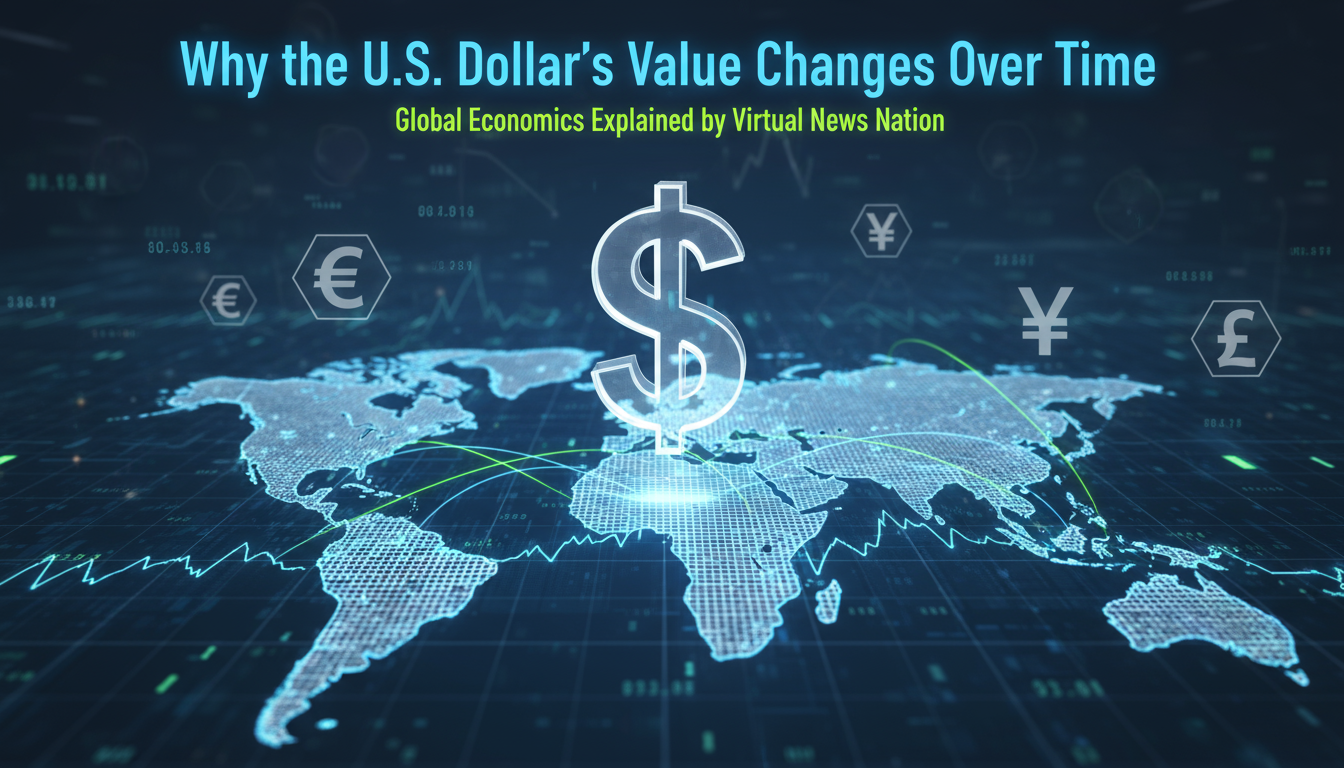
Posted on October 29, 2025
The U.S. dollar (USD) isn’t just cash; it’s a symbol of global trust and economic strength. It affects international trade, oil prices, travel, and even the stock market.
But why does the dollar’s value change? Why is it sometimes strong, making imports cheaper, and sometimes weak, causing prices to rise?
Let’s figure it out with clear info and answers to common questions about the dollar’s ups and downs.
🌎 1. What Makes a Dollar Strong or Weak?
Basically, the dollar’s value depends on supply and demand.
- More demand = stronger dollar
- Less demand = weaker dollar
But it’s not that simple. Things like interest rates (set by the Federal Reserve), inflation, trade, foreign investment, and global stability all play a role.
If people trust the U.S. economy, they invest in American bonds, companies, etc., which drives up the dollar’s value.
📈 2. The Fed’s Role
To understand the dollar, you need to know about the Federal Reserve (the Fed). When the Fed changes interest rates, it impacts the world.
- Higher rates = stronger dollar (attracts investors)
- Lower rates = weaker dollar (encourages spending)
That’s why headlines about the Fed moving interest rates make a splash in global markets.
📊 3. Inflation’s Impact
Inflation is a big reason why the dollar’s value changes. When inflation rises, your money buys less.
The Fed fights inflation by raising interest rates, which can help the dollar but might slow down the economy.
👉 Example:
From 2021 to 2023, the U.S. had high inflation, so the Fed raised rates to try to keep the dollar strong.
💹 4. Global Trade and Debt
The U.S. dollar is used in most world trade. Many countries hold a lot of their money in dollars.
Even if countries don’t trade directly with the U.S., they use dollars for things like oil and tech. Also, many countries owe money in dollars, so they need to buy dollars to pay it back.
This constant demand keeps the dollar strong.
🌍 5. How World Events Affect the Dollar
Big events can make the dollar swing:
- Wars: Dollar goes up (investors seek safety).
- Pandemics: Dollar goes up (investors want stability).
- Trade deals: Can push the dollar either way.
For example, during the 2020 pandemic, the dollar went up because investors trusted it more than other currencies.
✈️ 6. How This Affects You
Dollar changes affect everyone.
- In the U.S.: A strong dollar makes imports and travel cheaper. A weak dollar helps U.S. exports but raises import costs.
- Outside the U.S.: A strong dollar makes oil and tech cost more. A weaker dollar can lower import costs.
So, the dollar’s ups and downs affect your travel, shopping, and even food prices.
🏦 7. The Dollar’s Dominance
Will the dollar lose its power?
Some think so, because countries like China are pushing for other options.
But for now, probably not.
- The U.S. economy is still the biggest and most open.
- S. markets are reliable.
- No other currency offers the same stability.
Most central banks still keep a lot of their money in U.S. dollars. The world might change slowly, but the dollar is still the standard.
🔮 8. Predicting the Future
The dollar will always change, but we can see trends.
- If U.S. inflation is steady and interest rates stay high, expect a strong dollar.
- If the Fed cuts rates, the dollar could drop a bit.
Tech, politics, and digital currencies like Bitcoin will also have an impact, but they won’t replace the dollar soon.
🧠 9. Common Questions
Q1: Why does the dollar rise when the Fed raises interest rates?
→ Because higher returns attract global investors, increasing demand for USD.
Q2: How does inflation reduce the dollar’s value?
→ Inflation makes goods more expensive, reducing the dollar’s purchasing power domestically.
Q3: Which countries benefit from a weak U.S. dollar?
→ Export economies like Japan, Germany, and India benefit as their exports become more competitive.
Q4: Can cryptocurrencies or gold replace the dollar?
→ Not yet. They may complement it, but lack the liquidity, trust, and institutional backing of USD.
Q5: Why does oil price often move opposite to the dollar?
→ Because oil is priced in dollars. When the dollar strengthens, oil becomes more expensive in other currencies, reducing demand and lowering prices.
🌠 10. The Big Picture
Dollar changes aren’t bad; they show that markets are moving and economies are talking to each other. The dollar reflects the world economy. Even with ups and downs, the U.S. dollar is still a key piece of global financial stability.
🧭 Last Word
Every dollar movement tells a story about innovation and worldwide connection. Understanding these changes helps you understand the world economy.
So, next time you hear about the dollar, remember it’s a reflection of the world’s financial activity.
